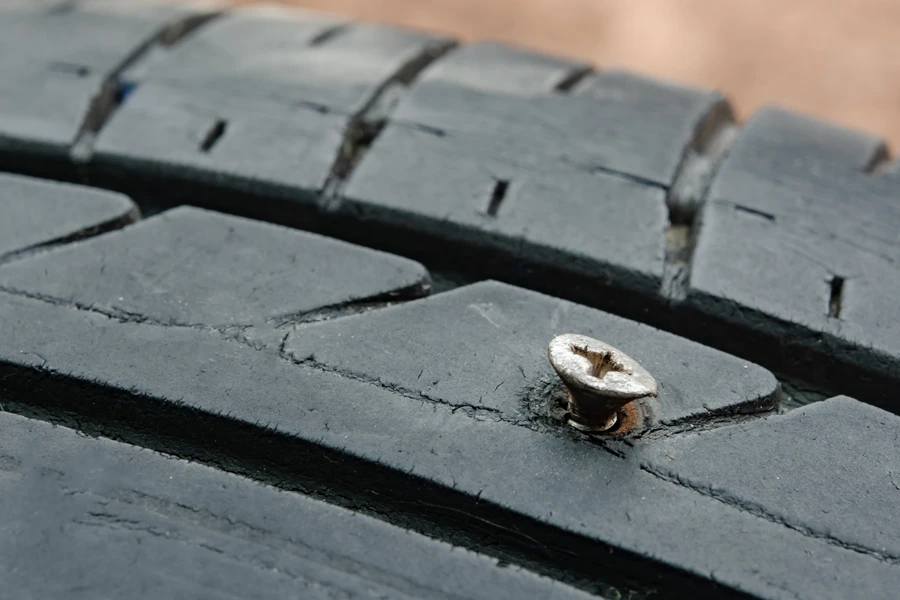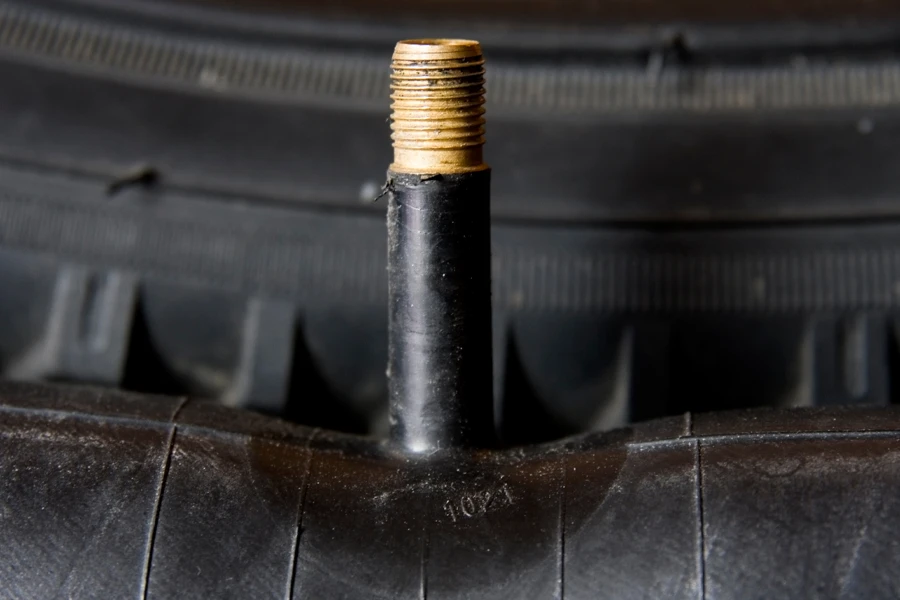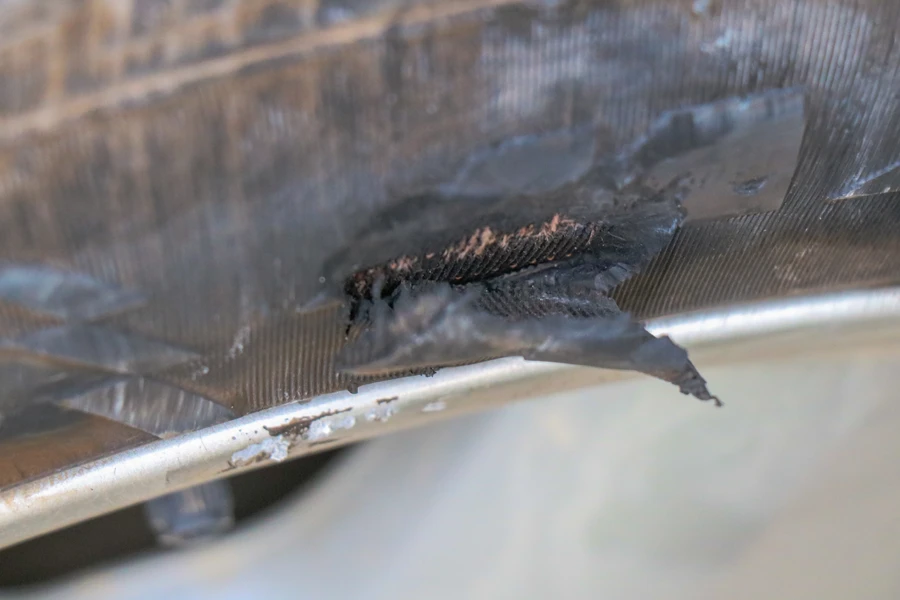You have already added that item to your appointment.

You have already added that item to your appointment.
Properly inflated tires help keep you in control, whether you’re driving to work or somewhere a bit farther away. While the tires on your vehicle will naturally lose 1 PSI (pounds per square inch) per month, a slow tire leak can add up to considerably more pressure loss over time. A tire leaking air can cause uneven tread wear, misalignments, safety issues, and a loss in fuel or range efficiency — especially if it goes unnoticed for a while. Here’s how to spot slow leaks on new and older tires, and what to do if you find one in one of your tires.
Is your TPMS dashboard indicator constantly lighting up? Do you notice one or more of your tires looking a bit underinflated more and more often? You could have a slow tire leak. Here are some of the more common causes:

Nails, screws, rocks, and small road debris that puncture your tire but don’t cause a flat can still allow small amounts of air to escape.

The valve stem is used to add air to your tires. When that stem becomes brittle from the elements or damaged by rocks or curbs, it can develop a slow leak. When any of your valve stems develop a leak, get to Les Schwab for a replacement.

Where the rubber of your tire meets the wheel is called the bead seat. This area can develop slow leaks if your wheels become slightly bent or damaged, or if a rock or other item gets lodged between the tire and wheel.

Hot and cold weather can damage tires over time, causing cracks and chips in the sidewall. While a damaged sidewall cannot be repaired and will eventually lead to tire failure, it can initially result in a slow air leak.
A slow leak isn’t always noticeable. Here are some ways to identify and pinpoint a slow leak:
If you’re being urged to add air to a specific tire, you may have an air leak.
Look for signs of damage and listen closely for escaping air. If you suspect you have a slow leak, remove the tire and wheel assembly. Then, spray the sidewall, tread, valve stem, and contact bead with a mixture of water and soap. If any bubbles appear, you may have found a leak.
Follow these instructions to add air to your tires. Or stop by Les Schwab. Our professionals will check your air pressure, add air when needed, and even check for slow leaks.
Once you’ve found a slow leak, repairs are sometimes possible if it is in the main part of the tread. Repairing issues with the valve stem or tire bead can be much more complicated and, in some cases, dangerous without the right tools.
While you can fix some slow leaks yourself with do-it-yourself patch kits, the professionals at Les Schwab are ready to help. Our teams have been repairing flats for decades using a multi-step process to ensure proper repair. That repair could even be free if you purchased the tires from Les Schwab.
Want to prevent slow air leaks? Try these three maintenance tips.
Book your appointment at Les Schwab and we’ll rotate your tires by moving them to different wheel positions on the vehicle. That gives tires on drive wheels a rest, evens out wear, helps avoid slow leaks, and adds life to your tires.
Every tire and wheel has a heavy spot in it. Those small differences can cause vibrations and uneven tire wear, which can lead to slow leaks when the bead seat loses its connection.
When you bump up against a parking lot barrier, hit a pothole, or hit the curb, something has to give. It’s often your alignment. The smallest misalignment can reduce fuel efficiency and tire wear

For your safety, and due to tire limitations, all repairs are limited to the tread area. If you find a slow leak on the shoulder or sidewall of any tire, get that tire replaced instead of trying to repair it.
It is important for your safety and budget to catch slow tire air leaks before they can damage your tires or cause a tire failure. Regularly inspect your tires and watch your TPMS dash indicator for air leaks, or stop by Les Schwab. Our professionals will give your tires a free visual inspection, check the air pressure, add air when needed, and show you all of your options, including repairs and replacement.